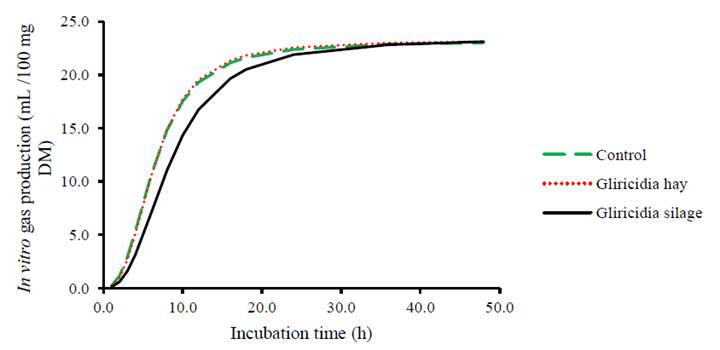ABSTRACT:
This study examined the use of the Gompertz, Groot, monomolecular, Richards and two-compartment-logistic mathematical models to investigate the kinetics of in vitro gas production of diets composed of combinations of Gliricidia hay or silage. In addition, the effects of Gliricidia hay or silage inclusion on the in vitro cumulative gas production of these diets were evaluated. Rumen fermentation kinetics were analyzed by the in vitro cumulative gas production methodology. The model parameters were estimated using the Gauss Newton method, with the exception of the Richards model, which was used by Marquardt’s algorithm. Model fit was assessed using the determination coefficient, F test for parameters identity, concordance correlation coefficient, root mean square error of prediction, and decomposition of mean square error of prediction into mean error, systematic bias and random error. The models were compared for accuracy (pairwise mean square error of prediction) and precision (delta Akaike’s information criterion). All model evaluation and comparison statistics were calculated using Model Evaluation System software version 3.2.2. The Groot and Richards models did not differ from each other (P>0.05) and were the most precise and accurate (P<0.05). Therefore, the Groot model was selected due to its better accuracy and precision and easier access to the parameters. The inclusion of Gliricidia silage in the diet resulted in an increase in the time to obtain the maximum rate of degradation and in the time after incubation when half of the asymptotic level was reached. The Groot model is recommended to estimate the average curve. Dietary inclusion of Gliricidia silage alters the gas production curve due to the longer time required for the diet to reach the maximum rate of degradation, this can increase the time the diet remains in rumen and promote a reduction in the consumption.
Key words:
fermentation kinetics; Groot model; hay; non-linear functions; silage

 Mathematical models to adjust the parameters of in vitro cumulative gas production of diets containing preserved Gliricidia
Mathematical models to adjust the parameters of in vitro cumulative gas production of diets containing preserved Gliricidia Thumbnail
Thumbnail
 Thumbnail
Thumbnail

